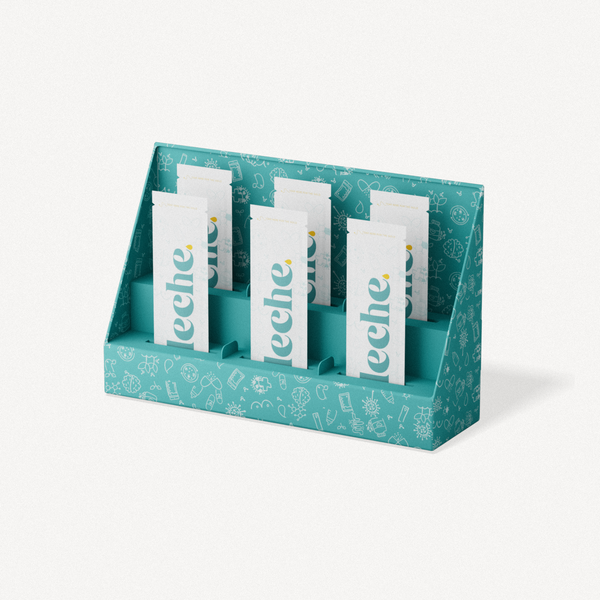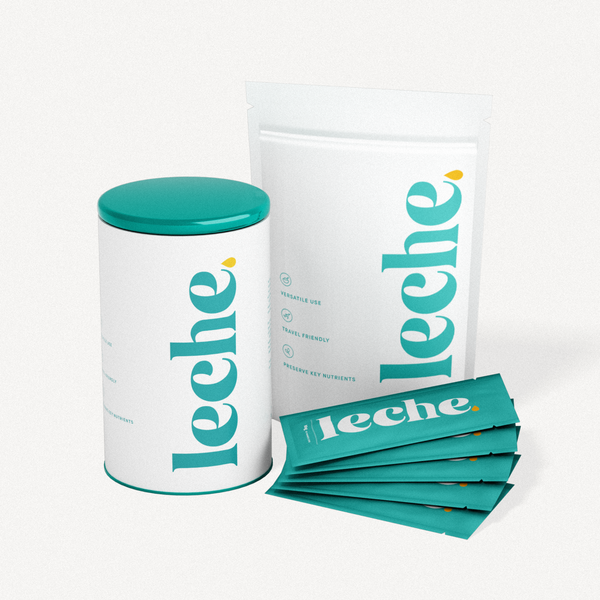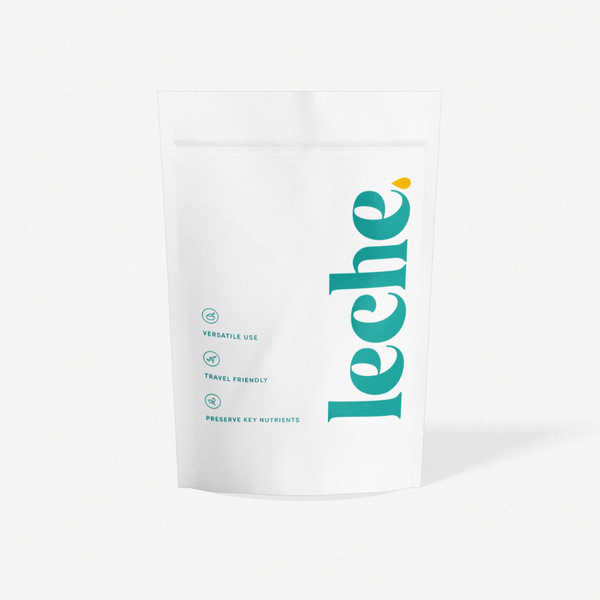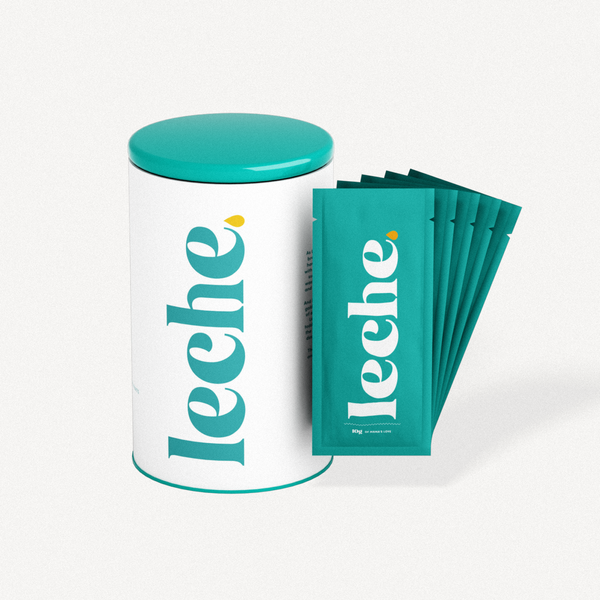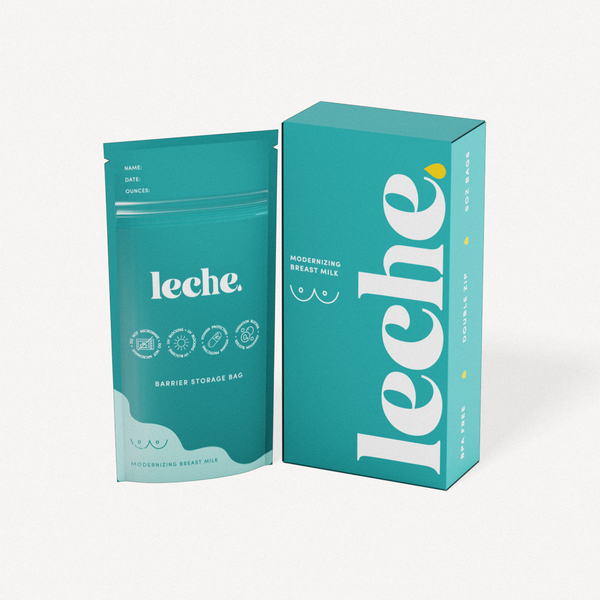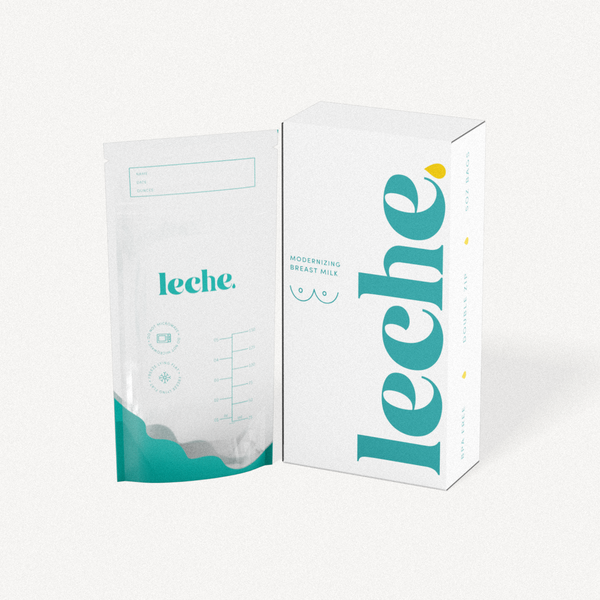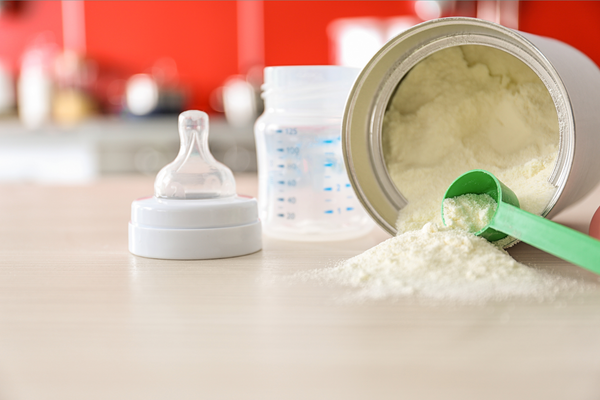Parents are bombarded with information HOURLY. We're breaking down the top myths about breastfeeding and breast milk for you, straight from the source -- our lactation counselor expert (Trish) and the Leche Pediatricians.

Myth: Breast milk can be contaminated with bacteria easily.
Truth: Breast milk is naturally resistant to bacteria and is considered very safe to consume. It turns out that breastmilk is full of special components that protect against bacterial contamination. These components include things like antibodies, white blood cells, and enzymes.
One of the main components is lactoferrin, which is a protein that is high in breastmilk and helps to inhibit the growth of harmful bacteria. Another component is secretory IgA (sIgA), which is an antibody that binds to pathogens and prevents them from attaching to the lining of the gut.
But don't just take our word for it, scientific studies back this up. A study published in the Journal of Human Lactation in 2020 found that the bacterial contamination rate in expressed breast milk was less than 1% in a sample of more than 1000 mothers. That's pretty low, if you ask us!
Now, we're not saying that you don't need to be careful when it comes to storing and handling your breastmilk. Proper hygiene and storage practices can definitely help to reduce the risk of contamination even more. But it's nice to know that breastmilk is pretty good at protecting itself.

Myth: Breastfeeding should be avoided if the mother has a low milk supply.
Truth: Even small amounts of breast milk can provide significant benefits for the baby. Mothers with low milk supply can try different techniques to increase their milk production, such as breastfeeding frequently, using a breast pump, and consulting with a lactation consultant.
Recent studies have shown that even mothers with low milk supply can produce enough milk for their babies. It is important to note that milk supply is not a fixed amount and can change depending on various factors such as the frequency of breastfeeding, the use of a breast pump, and the baby's feeding habits.
A study published in the Journal of Human Lactation in 2019, found that the majority of mothers with low milk supply were able to produce enough milk for their babies with the help of lactation support. The study also found that mothers with low milk supply who breastfed exclusively for at least 6 months had similar growth outcomes as babies of mothers with adequate milk supply.
Another study published in the International Breastfeeding Journal in 2020, found that mothers with low milk supply who used a breast pump in addition to breastfeeding, were able to increase their milk production and provide enough milk for their babies.
Additionally, a study published in the Journal of Perinatal Education in 2019, found that mothers with low milk supply who exclusively breastfed their babies for at least 6 months, had similar rates of breastfeeding success as mothers with adequate milk supply.
Overall, these studies suggest that even mothers with low milk supply can produce enough milk for their babies with the help of lactation support and techniques such as frequent breastfeeding and breast pumping. It is important for mothers with low milk supply to seek help from a lactation consultant to develop a plan to increase milk production and ensure that their babies receive the benefits of breast milk.

Myth: Is there such thing as fore milk and hind milk?
Truth: As a breastfeeding mom, you may have heard of the terms "fore milk" and "hind milk" and the idea that the milk produced at the beginning of a feeding (fore milk) is thinner and higher in lactose, while the milk produced later on in the feeding (hind milk) is thicker and higher in fat. But we're here to tell you that this idea is nothing more than a myth.
Recent studies have shown that the composition of breast milk is not consistent throughout a feeding, and it does not change dramatically. The fat content in breast milk varies over the course of a feeding, but the difference is not significant enough to be considered as two distinct types of milk. The idea of "fore milk" and "hind milk" implies that there is a clear separation between the two, but in reality, the milk in the breast is constantly changing and is not distinct compartments.
But that's not all, studies have also shown that the time of day can have an impact on the composition of breast milk as well. Research has found that the fat content of breast milk tends to be higher in the evening and at night, while lactose levels tend to be higher in the morning. This is thought to be due to changes in hormones and milk production throughout the day.
It's important to remember that every baby is different and the best way to ensure that your baby is getting the right balance of nutrients is to pay attention to their feeding patterns and diaper output. If you have any concerns, it's always best to consult with a lactation consultant or pediatrician.
In conclusion, don't get caught up in the myth of "fore milk" and "hind milk", and remember that the composition of breast milk varies over the course of a feeding and also depending on the time of day. The best thing you can do is to pay attention to your baby's needs and consult with a professional if you have any concerns. And don't forget, every breastfeeding journey is unique, so take it one day at a time, and remember that you got this!

Myth: You can't pump as much milk as a baby can get by breastfeeding.
Truth: Some mothers may pump more milk than their baby can consume, while others may pump less. It is important to note that the amount of milk pumped does not necessarily indicate the amount of milk the baby is getting. There are many reasons why a mom will choose to pump but here are some of the top reasons why mothers make this decision to ultimately help them through their breastfeeding journey.
Why Pump?
- Returning to work: Pumping allows mothers to continue providing breast milk to their babies while they are away from them. It also helps to maintain milk supply and prevent engorgement.
- Building a frozen milk supply: Pumping and freezing breastmilk can provide a backup supply for when the mother is not able to breastfeed or when she runs out of freshly expressed milk.
- Increasing milk supply: Pumping can help to increase milk supply by stimulating the breasts to produce more milk. It can also be helpful for mothers who have difficulty breastfeeding or have low milk supply.
- Relieving engorgement: Pumping can help to relieve engorgement, which is the feeling of fullness and discomfort in the breasts that can occur when milk is not removed frequently enough.
- Allowing others to feed the baby: Pumping can allow others to feed the baby, whether it's the father, grandparents or caregivers, giving the mother some time to rest or attend to other responsibilities.
- Providing milk for premature or sick babies: Pumping can be an important source of nutrition for premature or sick babies who are unable to breastfeed directly.
- Building a support system: Pumping can help a mother build a support system, allowing others to be involved in the feeding process, and providing the opportunity for bonding.
- Helping to track milk intake: Pumping can help to track how much milk the baby is getting, which can be useful for mothers who are concerned about their milk supply or the baby's growth.
- Maintaining milk supply during breastfeeding challenges: Pumping can be helpful for mothers who experience breastfeeding challenges such as sore nipples, inverted nipples, or milk blisters, by providing an alternative method of milk expression.
- Preparing for unexpected situations: Pumping can also provide a sense of security for mothers, knowing that they have a backup plan in case of unexpected situations such as a premature birth, unexpected absence, or unexpected illness.

Myth: You should avoid caffeine, alcohol, certain foods and medications while breastfeeding.
Truth: Moderate caffeine intake and a varied diet are generally considered safe for breastfeeding mothers.
It's a common belief that breastfeeding mothers should avoid caffeine and certain foods, such as spicy or gassy foods, in order to prevent discomfort or colic in their babies. However, research has shown that moderate caffeine intake and a varied diet are generally safe for breastfeeding mothers.
A study published in the American Journal of Obstetrics and Gynecology in 2016, found that moderate caffeine intake of up to 300 mg per day (about 2-3 cups of coffee) did not affect infants' sleep or behavior. The study also found that there was no significant difference in the amount of caffeine found in breastmilk between mothers who consumed caffeine and those who did not.
Another study published in the Journal of Human Lactation in 2018, found that a varied diet, including spicy and gassy foods, did not affect infants' sleep, behavior, or digestive function.
In terms of alcohol, moderate alcohol consumption (1-2 drinks per day) is considered safe while breastfeeding. The alcohol content in breastmilk is similar to that found in blood, and it is metabolized quickly, therefore it is not necessary to pump and dump milk after consuming alcohol. It's important to note that excessive alcohol consumption can lead to reduced milk production and affect the baby's sleep, so it's best to avoid excessive drinking.
When it comes to medications and breastfeeding, it is important to consult with a healthcare provider or a lactation consultant before taking any medication, as some medications may not be safe for breastfeeding mothers or their babies. However, many medications are considered safe to use while breastfeeding, as the amount of medication that is passed into breast milk is typically very small.
It's important to note that certain medications can reduce milk production, and some medications can affect the taste of the milk, which can cause the baby to refuse to breastfeed. For these reasons, it's important to find the medication that has the least potential to harm the baby, and if the medication is necessary and can't be avoided, to weigh the potential risks and benefits of the medication.
It's also important for breastfeeding mothers to be aware of the potential side effects of medications on their own health. Some medications may not be recommended during breastfeeding because of the risks to the mother's health.
If you are taking a medication while breastfeeding, it's important to inform your healthcare provider or lactation consultant. They will be able to provide you with the most up-to-date information on the safety of the medication for breastfeeding mothers and their babies.
It's also important to remember that breastfeeding mothers should not stop or change their medications without first consulting with their healthcare provider. As always, it's important to weigh the potential risks and benefits of any medication with the help of a healthcare professional.
We hope that this information is helpful and inspires you to continue on your breastfeeding journey with confidence. We'd love to hear from you -- what questions do you have about breast milk? Submit your own question by emailing support@itsmyleche.com
